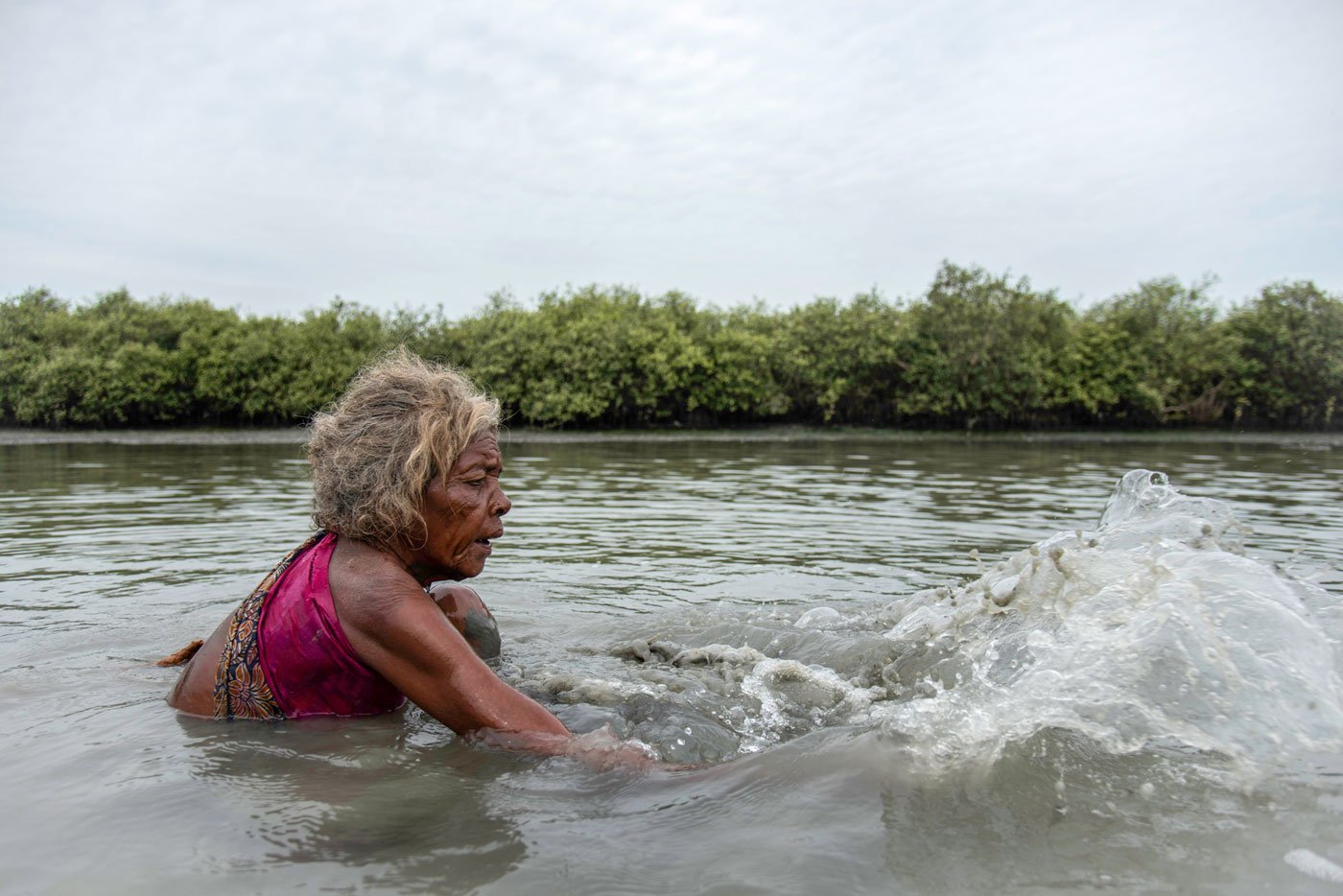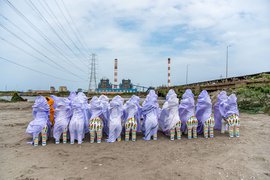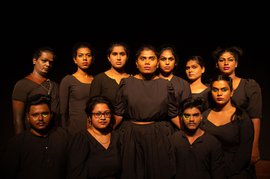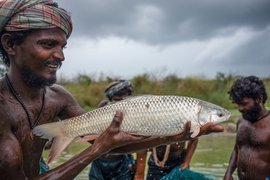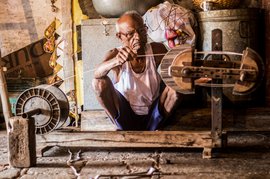“You have been taking my photos all these years, what are you going to do?” Govindamma Velu asks me, breaking down. The death of her son, Sellayya, in March this year, has left her shattered. “I have lost my sight completely. I am unable to see you. Who will look after me and my aged mother?”
She shows me the cuts and bruises on her hands. “I suffer a lot of pain to take home 200 rupees. Am I of the age where I can throw a net to catch prawns? No, I can’t. I can only use my hands,” says Govindamma. A small, frail woman in her 70s, this prawn catcher believes she is 77 years old. “That’s what people tell me,” she says. “Digging through sand and holding the prawns leaves deep cuts. I wouldn’t know if I were bleeding when my hands are immersed in water.”
I first noticed her while travelling in the Buckingham Canal area in 2019. The canal runs parallel to the Kosasthalaiyar river in Ennore, a locality in north Chennai extending into the neighbouring Tiruvallur district. Like a grebe bird, her dexterity in diving and swimming underwater in the canal caught my attention. She swiftly ran her hands through the coarse sand of the riverbed and picked prawns faster than anyone else there. While gathering them in a palm basket tied to her waist, in hip-deep water, the colour of her skin seemed to merge with that of the canal, making them inseparable.
A navigation channel built in the 19th-century, the Buckingham Canal, and the Kosasthalaiyar and Araniar rivers that flow through Ennore, form a significant water system that provides a lifeline to Chennai city.
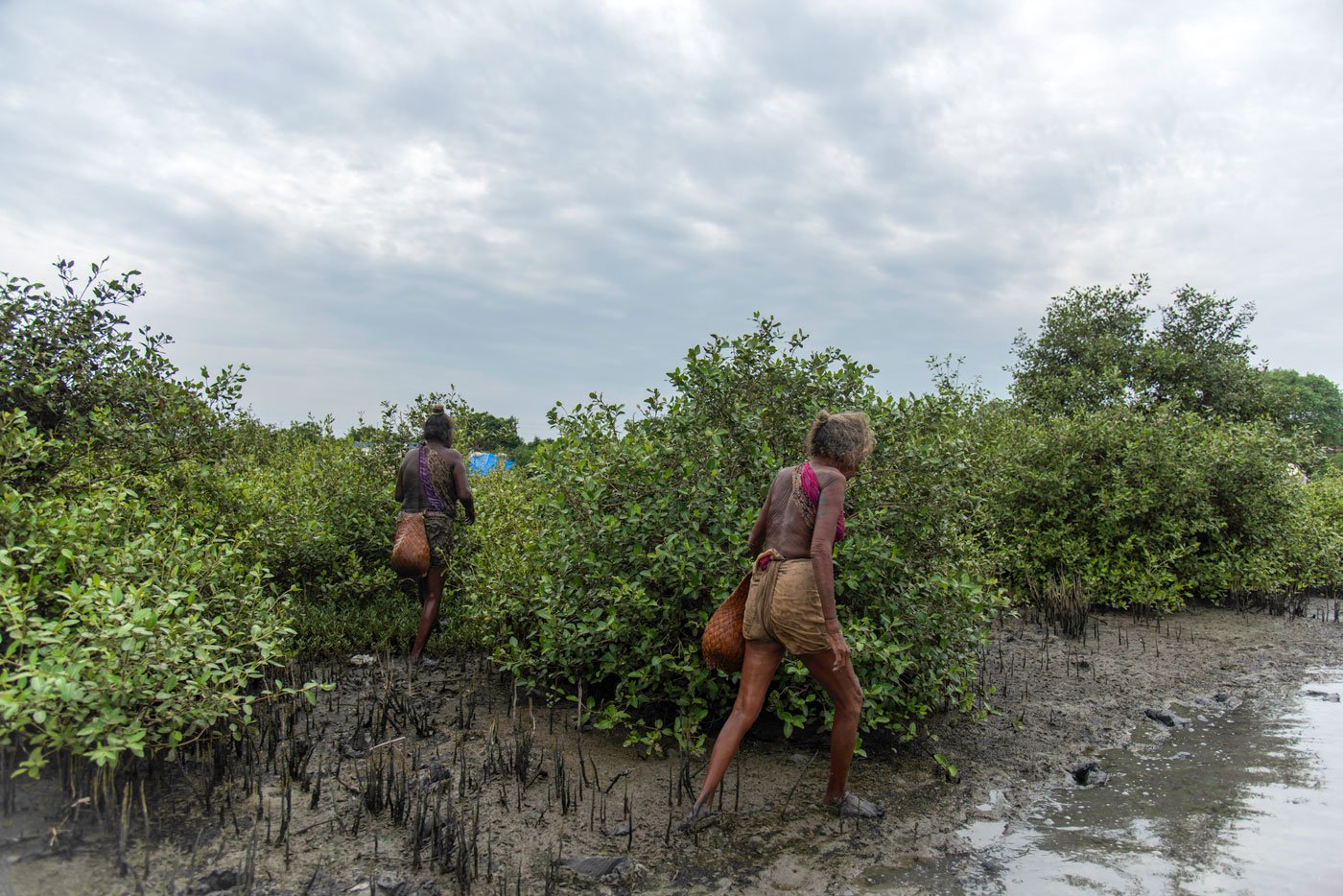
Govindamma Velu (right) walking out of Kosasthalaiyar river near Kamarajar Port in Ennore, north Chennai, with a relative (left). Since they could not find enough prawns, they are moving towards Buckingham Canal, which runs parallel to Kosasthalaiyar river
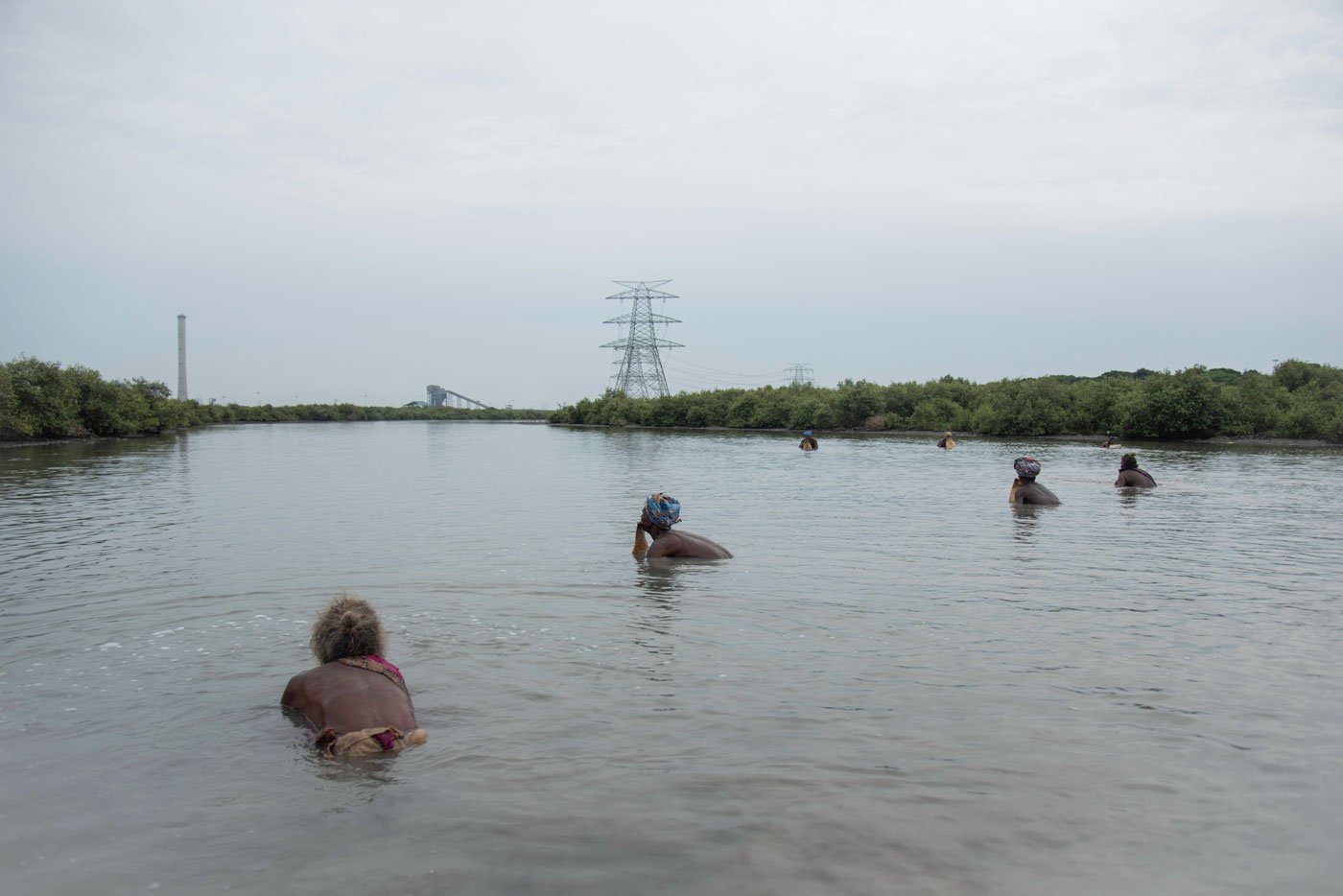
Govindamma (extreme left) fishing for prawns in Kosasthalaiyar river with others from her Irular community. They wade through the water for 2-4 kilometres to catch them
Mangrove forests embrace the Kosasthalaiyar river as it meanders from Ennore, reaching the lake in Pazhaverkadu, popularly known as Pulicat. People living along this 27-kilometre river stretch share a strong bond with their land and water. Both men and women can be seen fishing, their main source of livelihood. The prawn varieties found here are of immense value.
The first time we met, in 2019, Govindamma told me, “I have two children. My husband died when my son was 10 and my daughter was 8 years old. It has been 24 years now. My son is married and has four daughters; my daughter has two girl children. What else does one need? Come home, we can talk.” With that invitation, she started striding towards Athipattu Pudunagar (Athipattu New Town), a seven-kilometre walk, where she sells her catch on the roadside. It took me two years to meet her again because of the Covid-19 lockdowns.
Govindamma belongs to the Irular community, which is listed as Scheduled Tribe in Tamil Nadu. She used to live close to Kamarajar Port (formerly Ennore Port) in Chennai, which is near the Kosasthalaiyar river where she catches prawns. But the tsunami destroyed her hut in 2004. A year after that, she moved to Athipattu town, 10 kilometres away, in Tiruvallur district. A majority of the Irular people affected by the tsunami were rehabilitated here in three colonies, at Arunodhayam Nagar, Nesa Nagar and Mariyamma Nagar.
The rows and rows of houses built after the tsumani in Arunodhayam Nagar, where Govindamma now lives, look faded. When her granddaughter got married a couple of years ago, she vacated her house for her and started living under a neem tree close by.
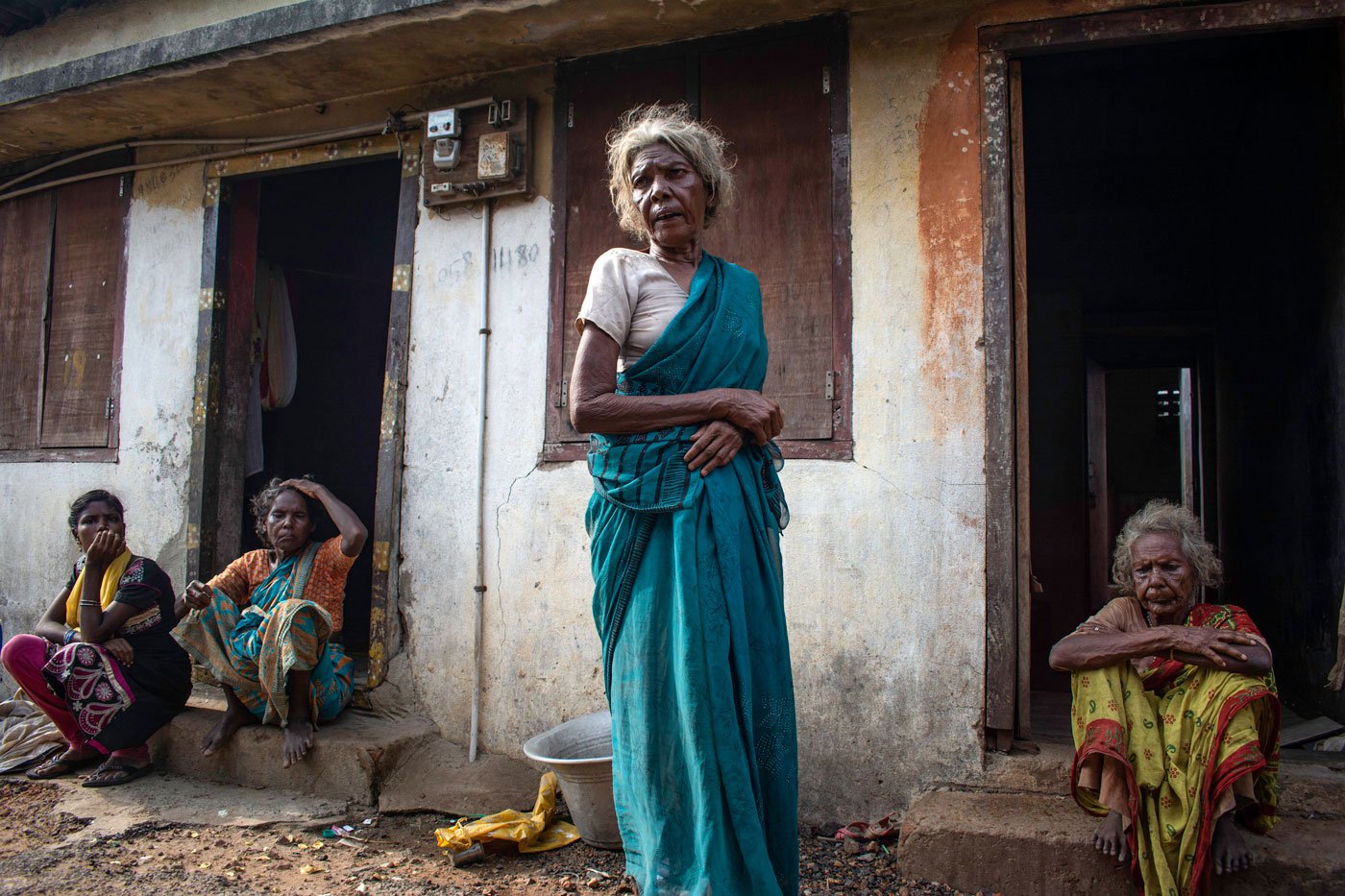
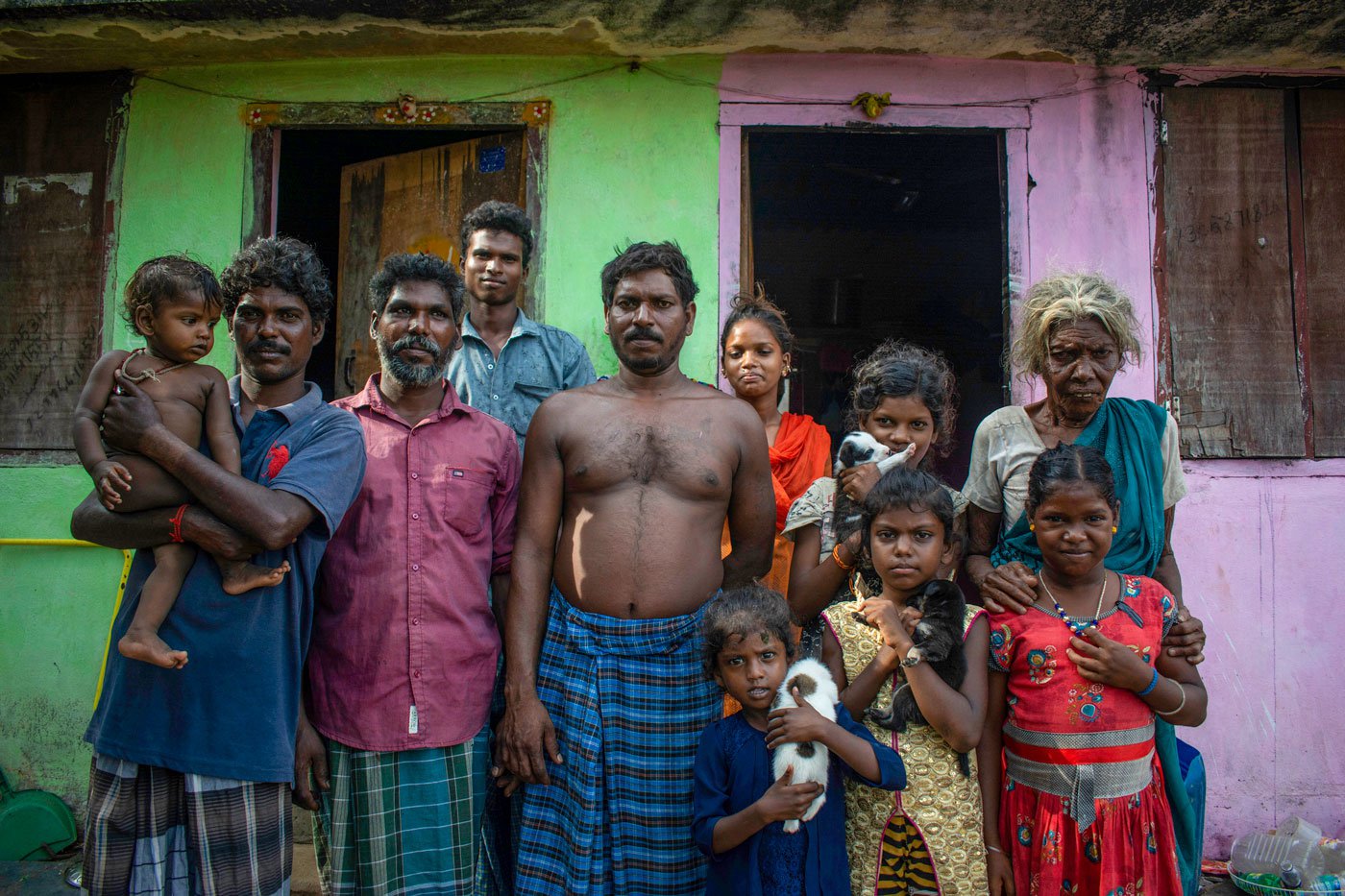
Left: Govindamma (in the green saree) and her mother (right) outside their house in Arunodhayam Nagar. Right: Govindamma, her son Sellayya (in the blue-checked lungi at the centre), her grandchildren and their relatives. Sellayya died by suicide over a family dispute in March this year
Every day, soon after she wakes up at 5 a.m., Govindamma walks two kilometres to Athipattu railway station. She then takes a train to Athipattu Pudunagar, two stops away. From there, she walks the seven kilometres to the Matha (St. Mary’s) church, near Kamarajar Port. She travels by a shared autorickshaw sometimes. The port area is dotted by tiny makeshift huts that shelter the Irulars, who catch and sell prawns for survival. Govindamma joins them and quickly gets down into the water to work.
Her deteriorating eyesight has made the journey to work arduous. “I need help to get into the train and auto. I can’t see like before,” Govindamma says. She needs at least Rs. 50 a day for the travel. “How will I run my life if I have to spend so much, when I only earn 200 rupees by selling prawns?” she asks. Govindamma manages to earn Rs. 500 at times. But on most days she hardly makes Rs. 100, and sometimes nothing at all.
On days when the tide is very high in the morning, Govindamma goes to her spot at the night, after the water level recedes. Despite her poor eyesight, she finds it easy to catch prawns in the dark. But water snakes, and the
irun kelathi
(grey eel catfish) in particular, scare her. “I cannot see properly…I don’t know what touches my feet…whether it is a snake or net,” she says.
“We have to get home without being struck by it. If this black fish [grey eel catfish] slaps our hand, we won’t be able to wake up for another seven or eight days,” Govindamma says. The pectoral fins of grey eel catfish (
Plotosus canius
)
are considered poisonous, and can also inflict painful wounds. “Even medicines won’t relieve that pain. Young hands can bear this pain. How can I, tell me?”
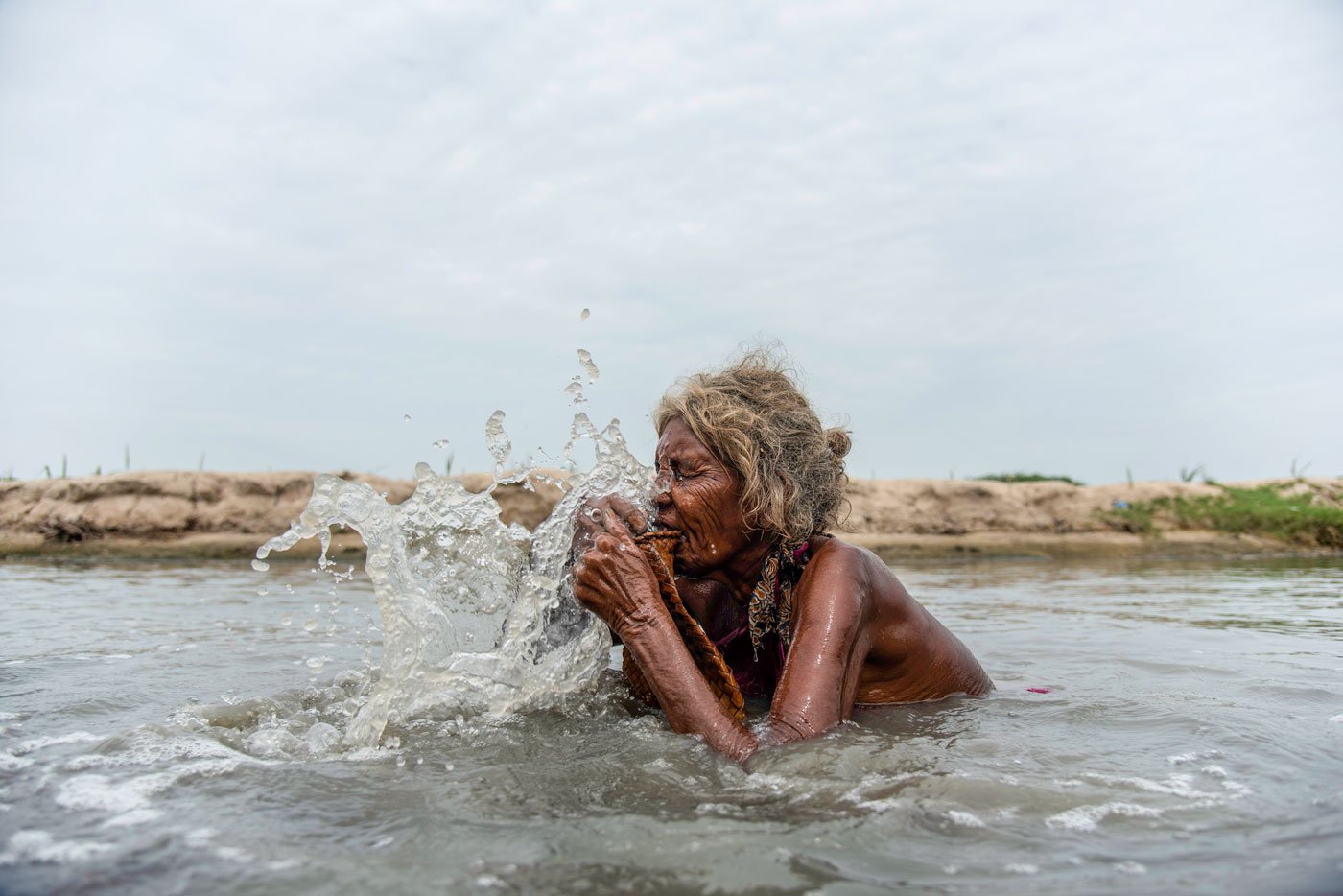
Govindamma is picking prawns and collecting them in a basket, held in her mouth, in the Buckingham Canal
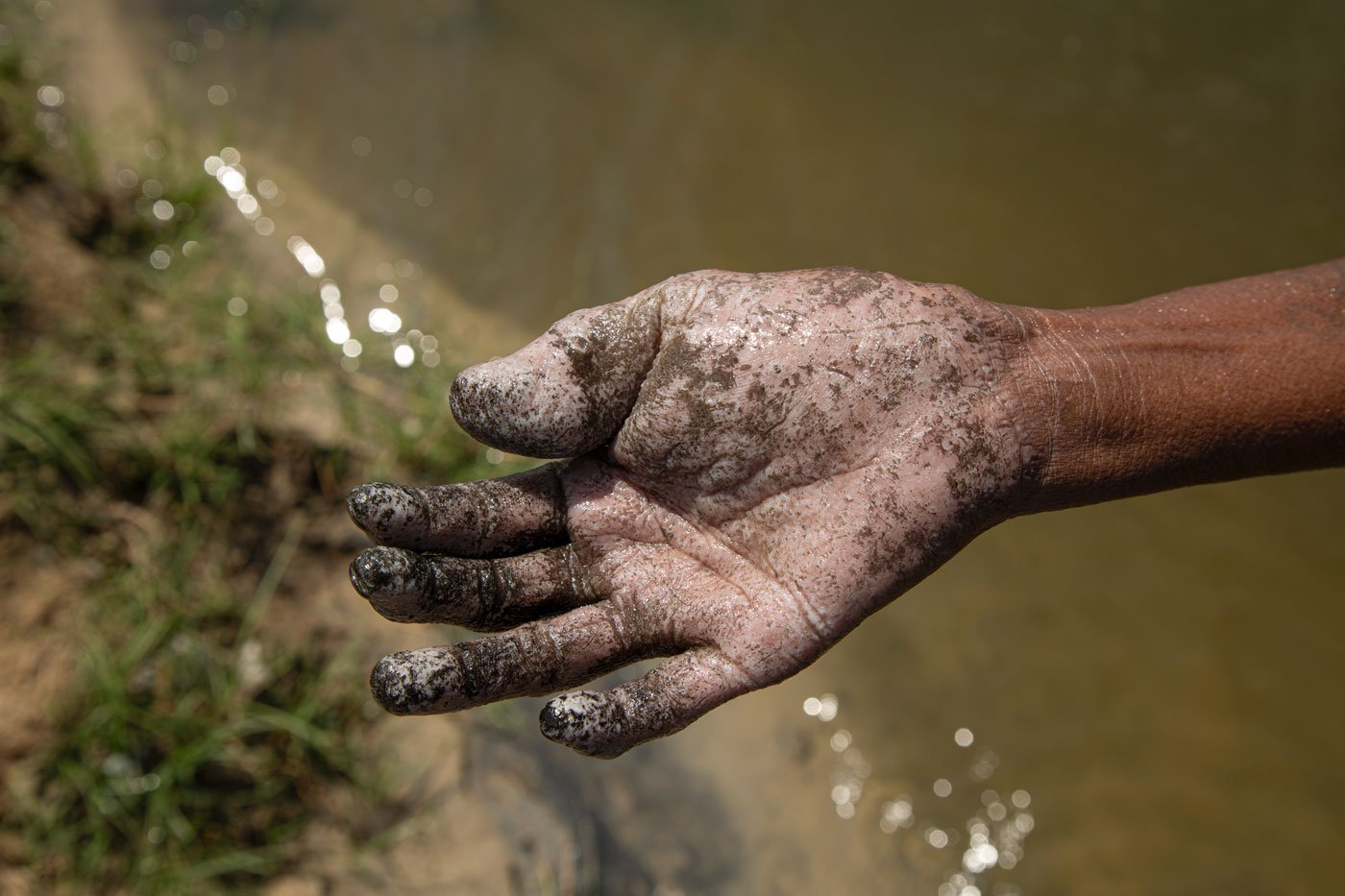
The cuts and bruises on Govindamma's hand. 'Digging through sand and holding the prawns leaves deep cuts'
The indiscriminate disposal of fly ash and waste from the thermal power plants in Ennore, which have formed mounds and dents in the water canal, have compounded her problems. “ Antha sagathi paaru [Look at that sludge],” she points out as I get into water to take a photograph. “ Kaala eduthu vachu poga namakku sattu poyidudu [I lose my strength just by moving my feet].”
The Ennore-Manali industrial area surrounding the Buckingham Canal houses at least 34 large hazardous industries, including thermal power plants, petro-chemical and fertiliser factories. There are also three large harbours located here. The industrial waste polluting the water bodies here has been depleting marine resources. Local fishermen say they get only 2-3 prawn varieties now as compared to 6-7 two decades ago.
Govindamma is worried about the decline in prawn catch over the years. “When there was heavy rain, we used to get lots of prawns. We would collect and go to sell by 10 in the morning. Now we don’t get as much as we used to earlier,” she says. “In other seasons, we work until afternoon [2 p.m.] to catch half to one kilo of prawn.” So the catch is sold later in the day.
Most days, she is forced to wait until 9 p.m. or 10 p.m. to sell the prawns. “People who come to buy from me bargain for less price. What do I do? We have to sit in the scorching heat to sell these. People don’t understand this. You are also seeing – look how much we have to struggle to sell these two heaps of prawns,” Govindamma says. Each heap, sold at Rs. 100 to Rs. 150, has 20-25 prawns, “I don’t know to do any other work, this is my livelihood,” she says with a sigh.
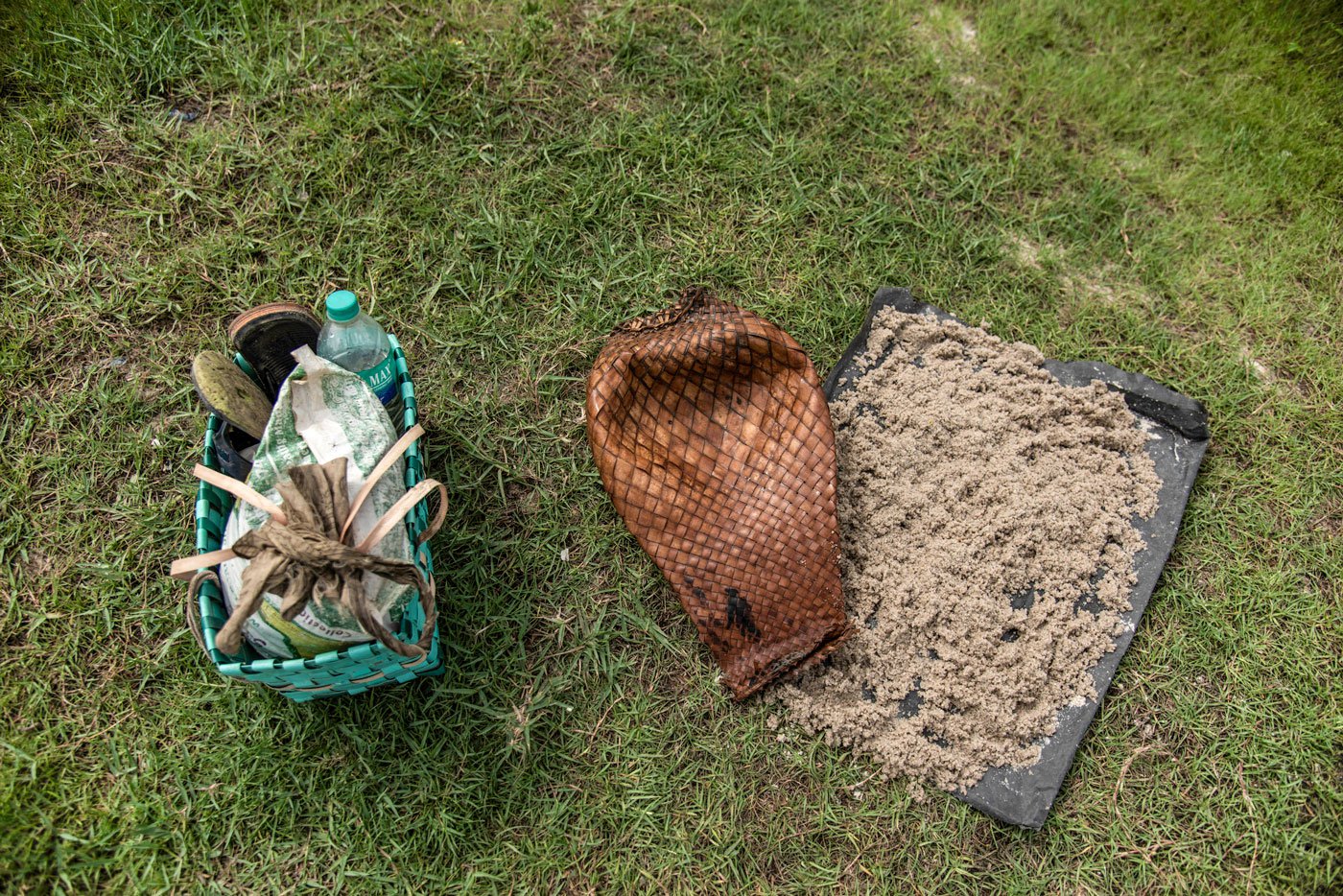
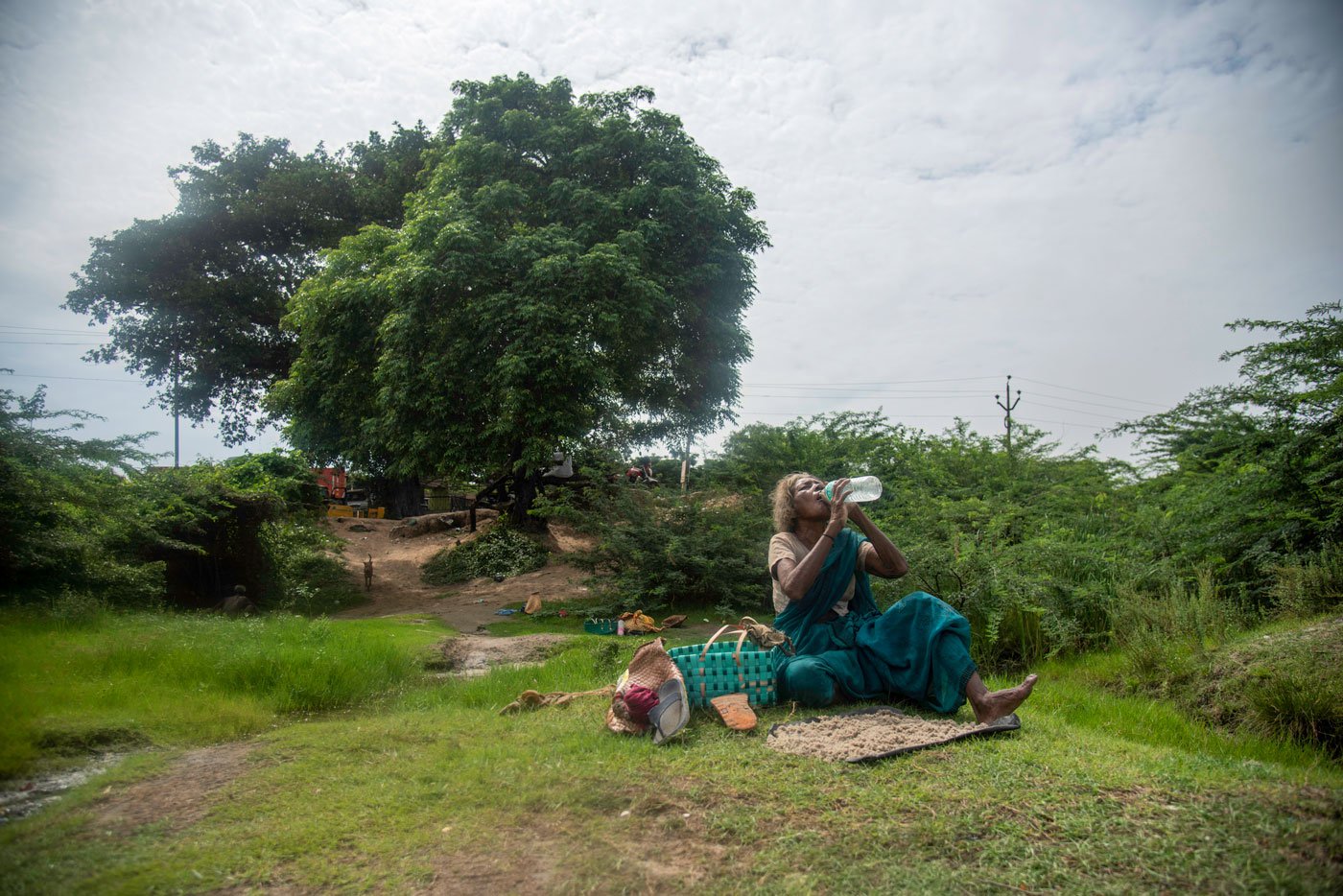
Left: Her fishing equipment, which is her only lifeline. Right: After her work, Govindamma sits down to take a sip of water near the Buckingham Canal
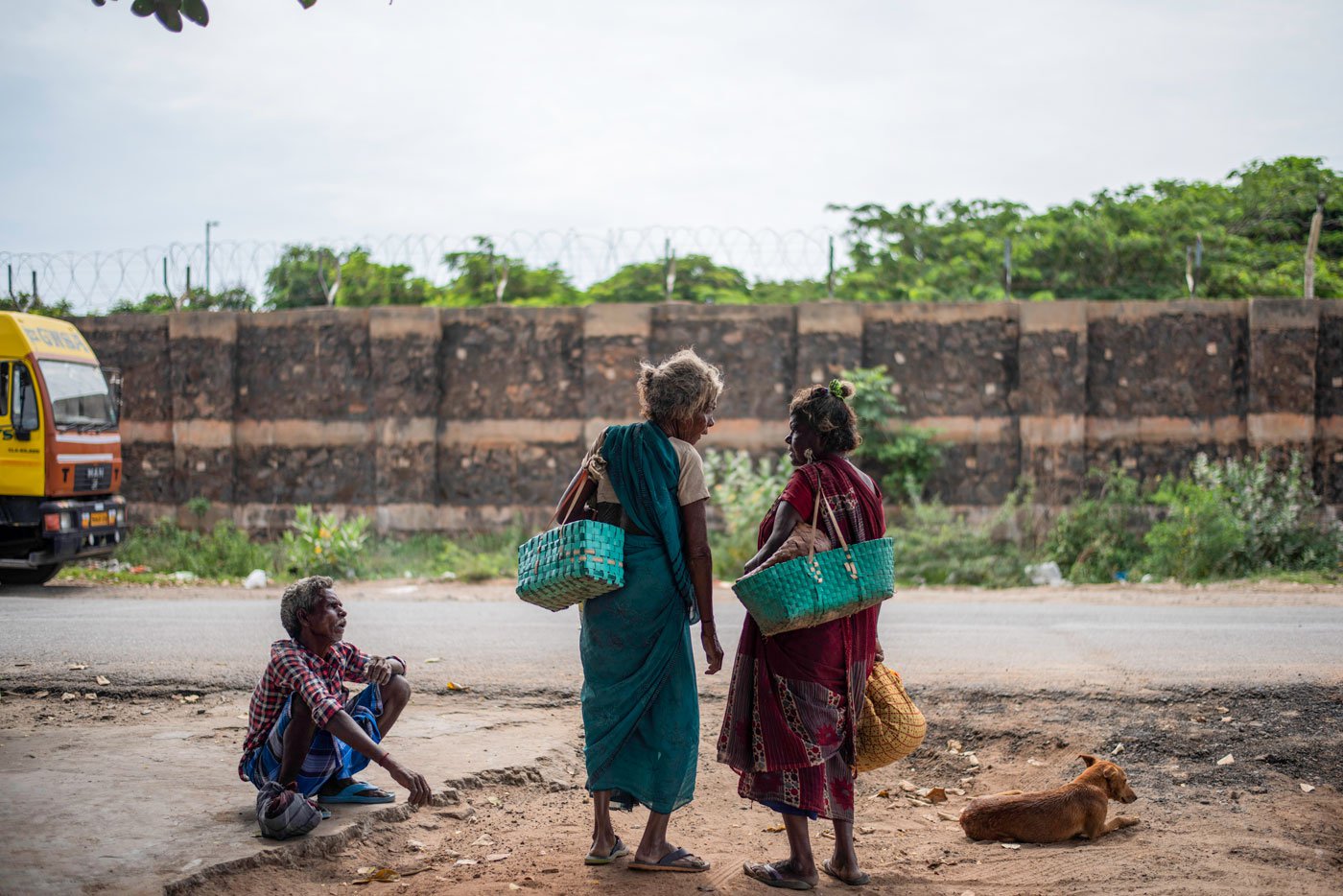
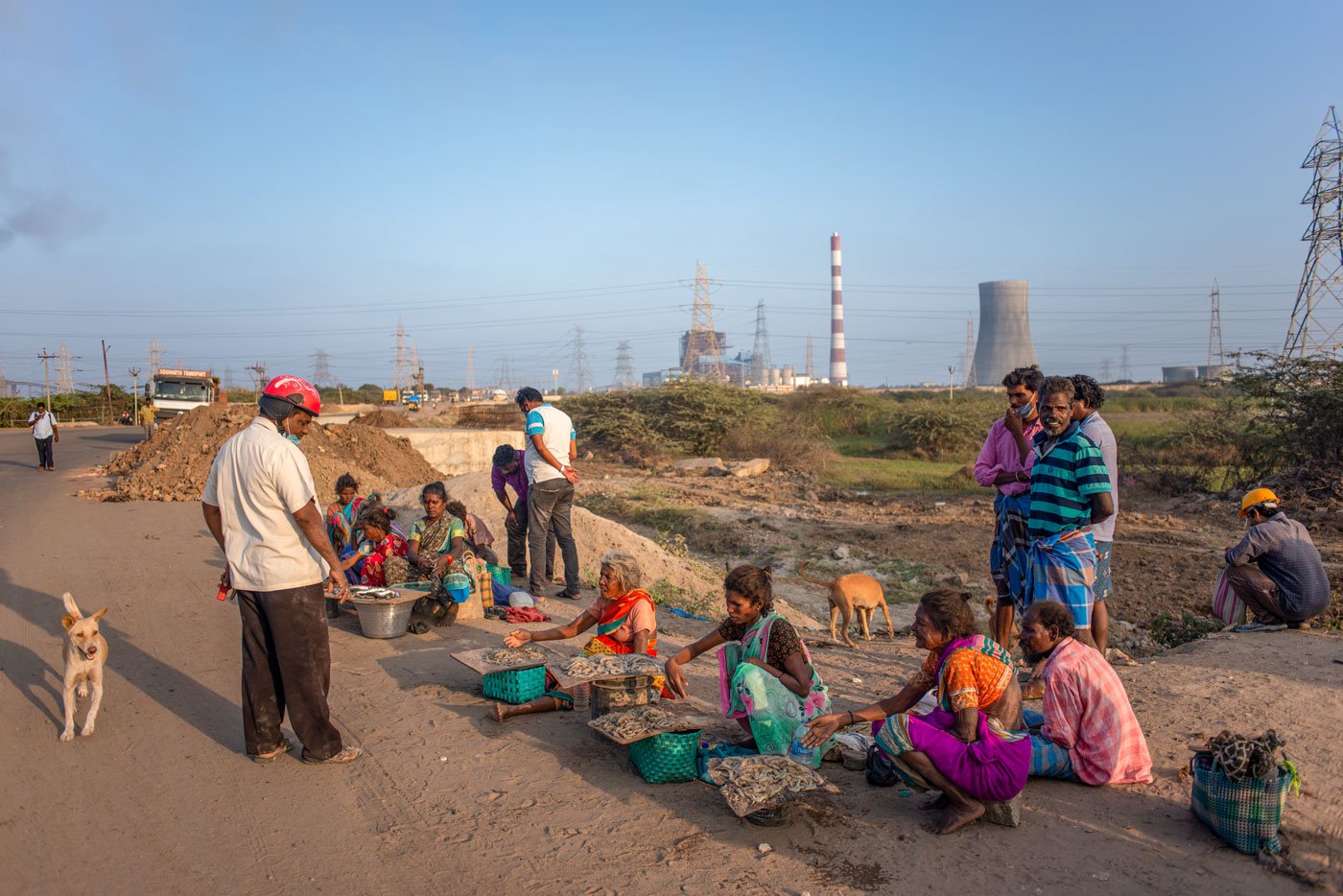
Left: Waiting for a ride at St Mary’s church, near Kamarajar Port. Right: Govindamma sells prawns on the roadside near Tiruvottiyur highway in Athipattu Pudunagar. Each heap, sold at Rs. 100-150, has 20-25 prawns
Govindamma doesn’t preserve the prawns in ice, but smears them with sand to keep them moist and fresh. “It will be fresh till the people [customers] take it home and cook. Do you know how tasty it is when cooked?” she asks me. “I have to sell the prawns I catch on the same day. Only then can I drink kanji [porridge] and buy something for my grandchildren. If not, I have to go hungry.”
She was initiated into the ‘art’ of catching prawns quite early. “My parents didn’t send me to school to read or write, but took me to the river to teach me to catch prawns,” Govindamma recalls. “I have been in water all my life. This river is everything to me. Without this, I have nothing. Only god knows how much I struggled after my husband’s death to feed my children. If I hadn’t caught prawns in this river, I wouldn’t have lived.”
Her mother had raised Govindamma and her four siblings by catching prawns in the river, and buying and selling small fish varieties. Govindamma’s father had died when she was 10 years old. “My mother didn’t remarry. She spent her entire life working to take care of us. She is now more than 100 years old. People in the tsunami colony call her the oldest living person in the colony.”
The lives of Govindamma’s children too are dependent on this river. “My daughter is married to an alcoholic. He doesn’t do any proper job. It is her mother-in-law who provides food by catching and selling prawns,” she says.
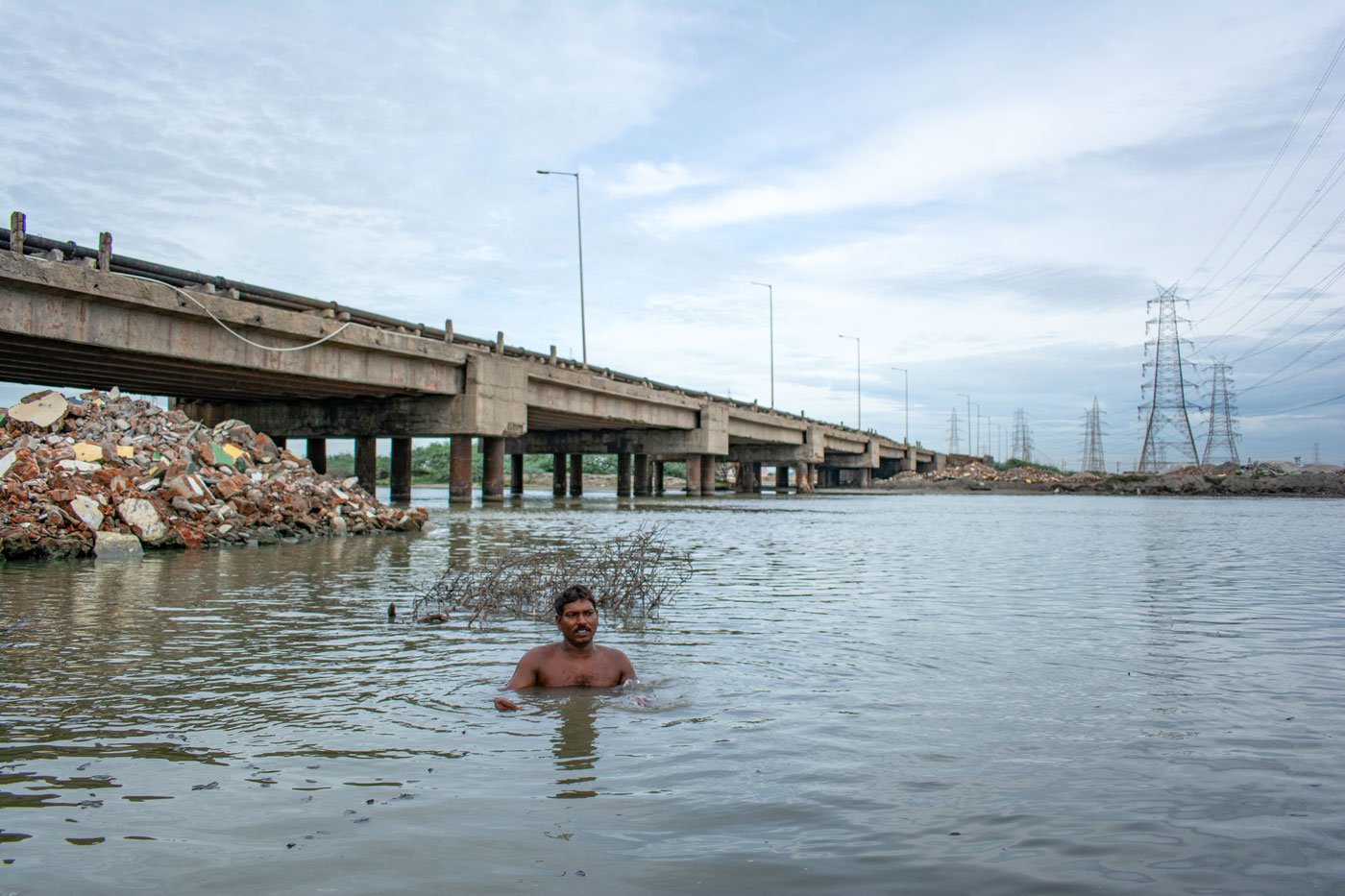
Sellayya preparing to catch prawns in Kosasthalaiyar river. The picture was taken in 2021
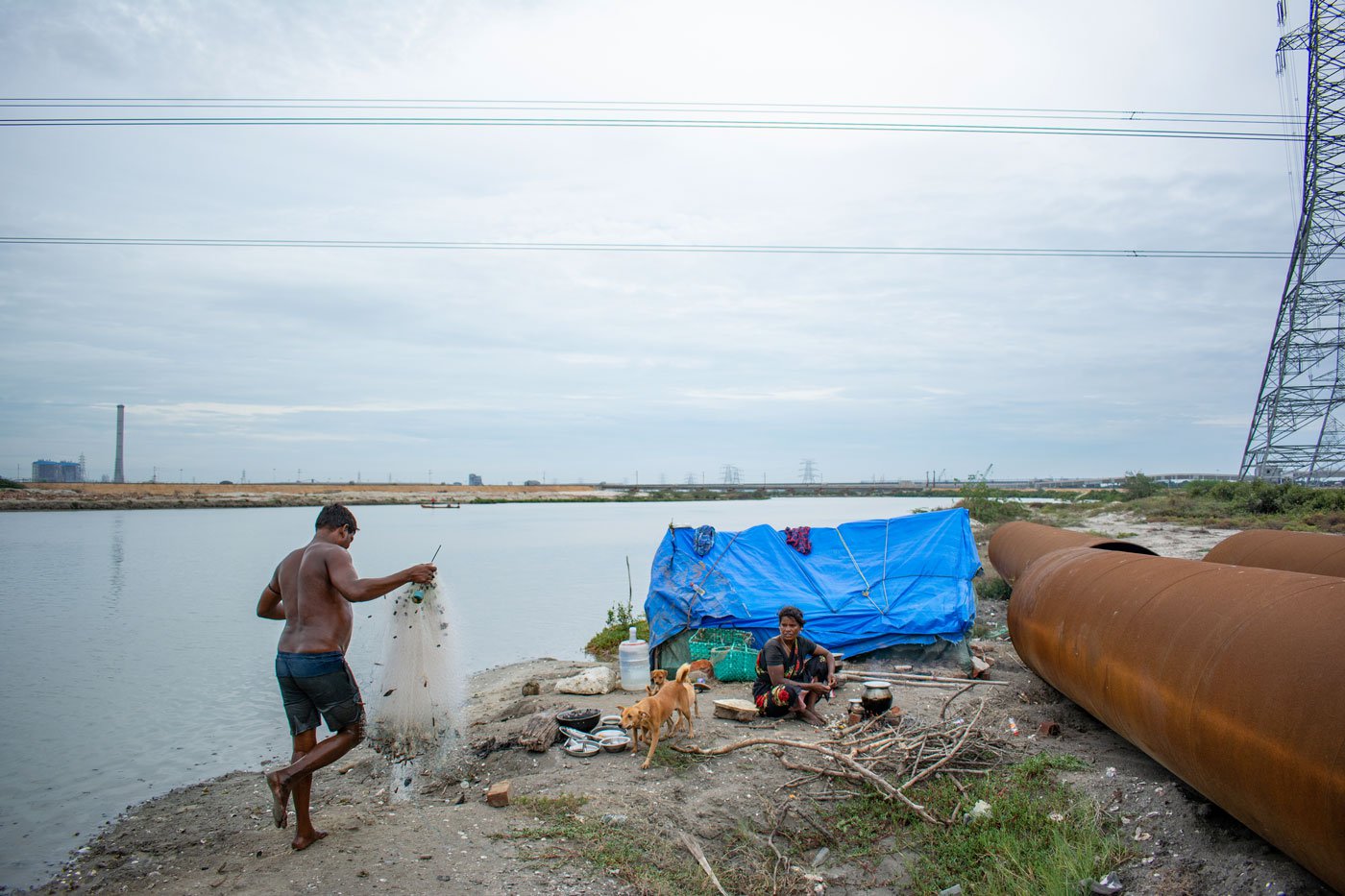
Sellayya (left) holding a net with his fish catch, while his wife is cooking a meal for their family next to a makeshift tent on the banks of the Kosasthalaiyar
Sellayya, her elder son, who was 45 when he died, also caught prawns to support his family. When I met him in 2021, he had recalled: “When I was younger, my parents would leave home at 5 in the morning to go to the river. They would return home only by 9 or 10 at night. My sister and I would fall asleep hungry. My parents would bring home rice, cook, and wake us up to feed us.”
Sellayya had migrated to Andhra Pradesh when he was 10 years old, to work in a sugarcane factory. “When I was there, my father met with an accident while returning home after catching prawns, and died. I wasn’t able to see my father’s face back then,” he said. “After his death, my mother did everything. She would spend most of her time in the river.”
The factory wasn’t paying him on time, so Sellayya returned home and joined his mother. Unlike her, Sellayya and his wife would use nets to fish for prawns. They have four daughters. “I have married off my eldest daughter. One is studying graduation [BA English] and the other two are going to school. The money I earn from selling prawns is spent on their education,” he said. “After completing her graduation, my daughter wants to study law. I have to support her.”
However, his wish remains unfulfilled. In March 2022, Sellayya died by suicide over a family dispute. Broken hearted, Govindamma says, “I lost my husband early. Now, my son. I don’t have anyone to light my pyre when I die. Can anyone take care of me the way my son did?”
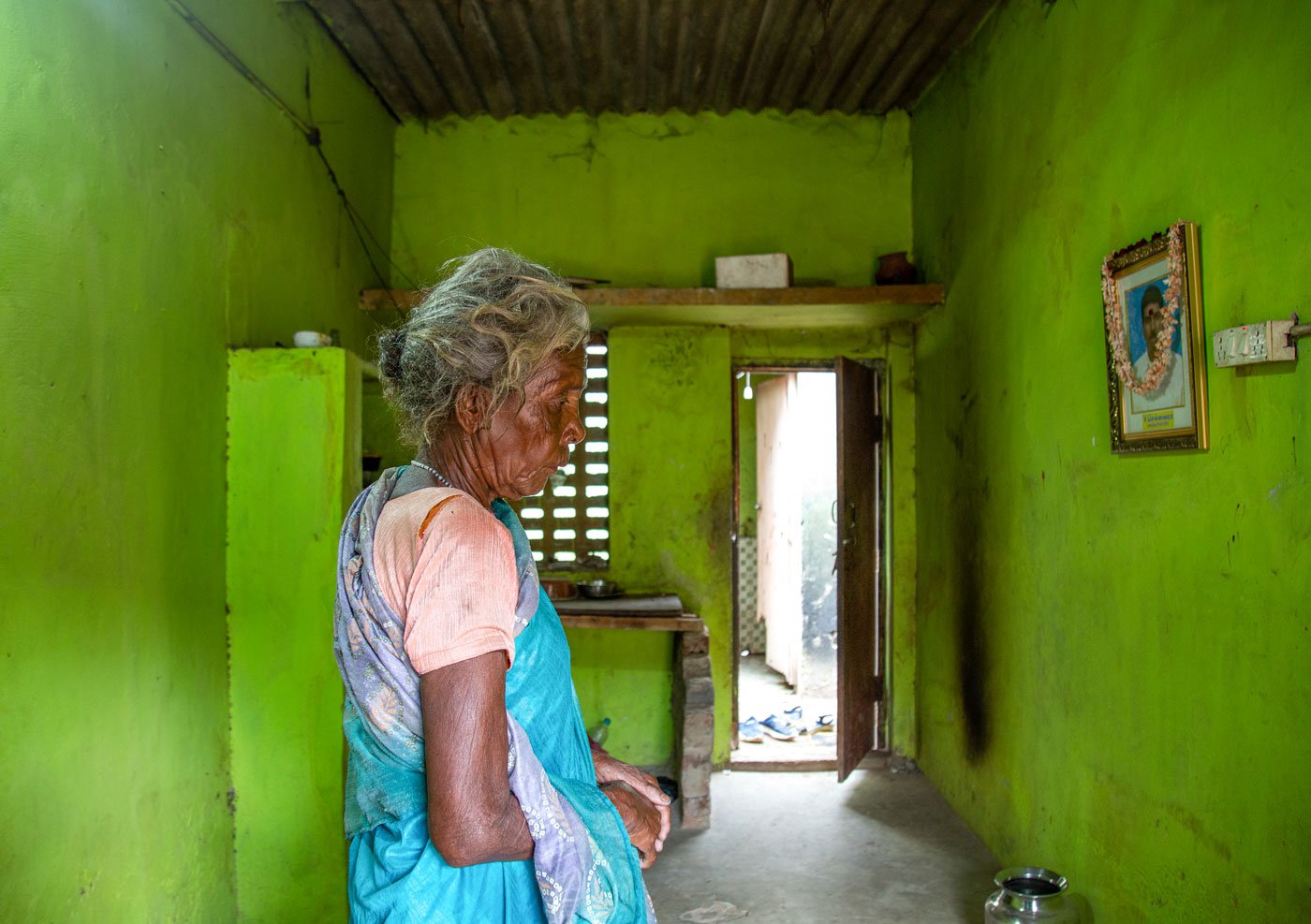
Govindamma breaks down looking at the picture of Sellayya after his death, in his house in Arunodhayam Nagar
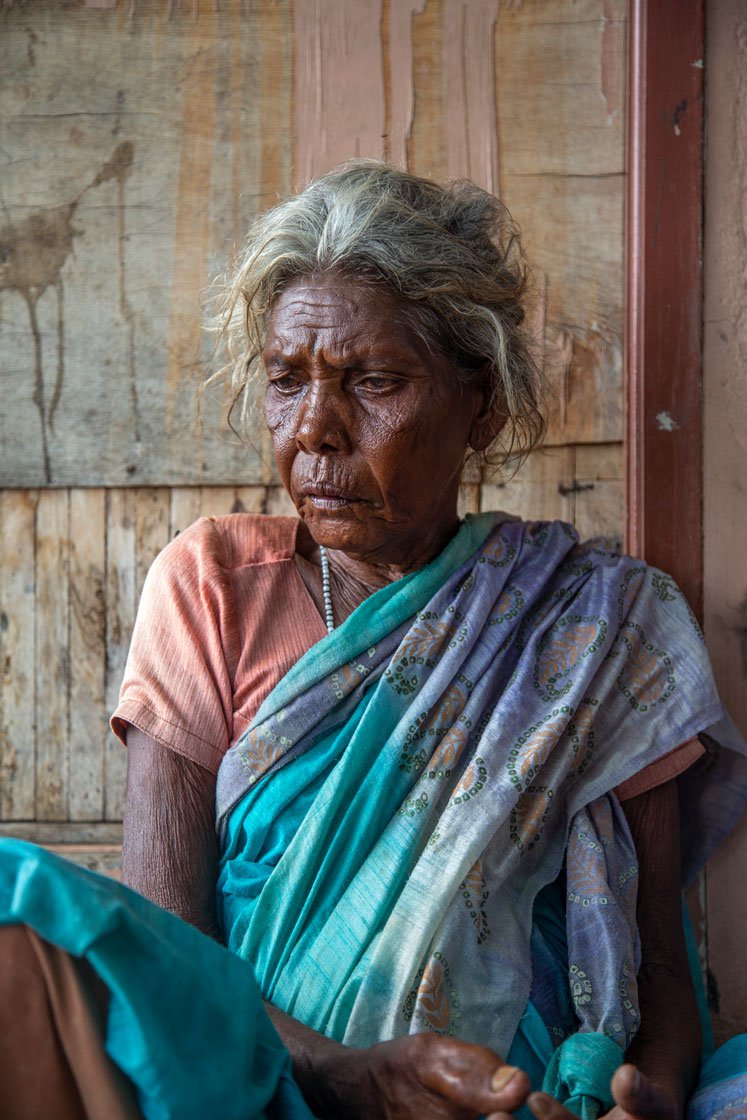
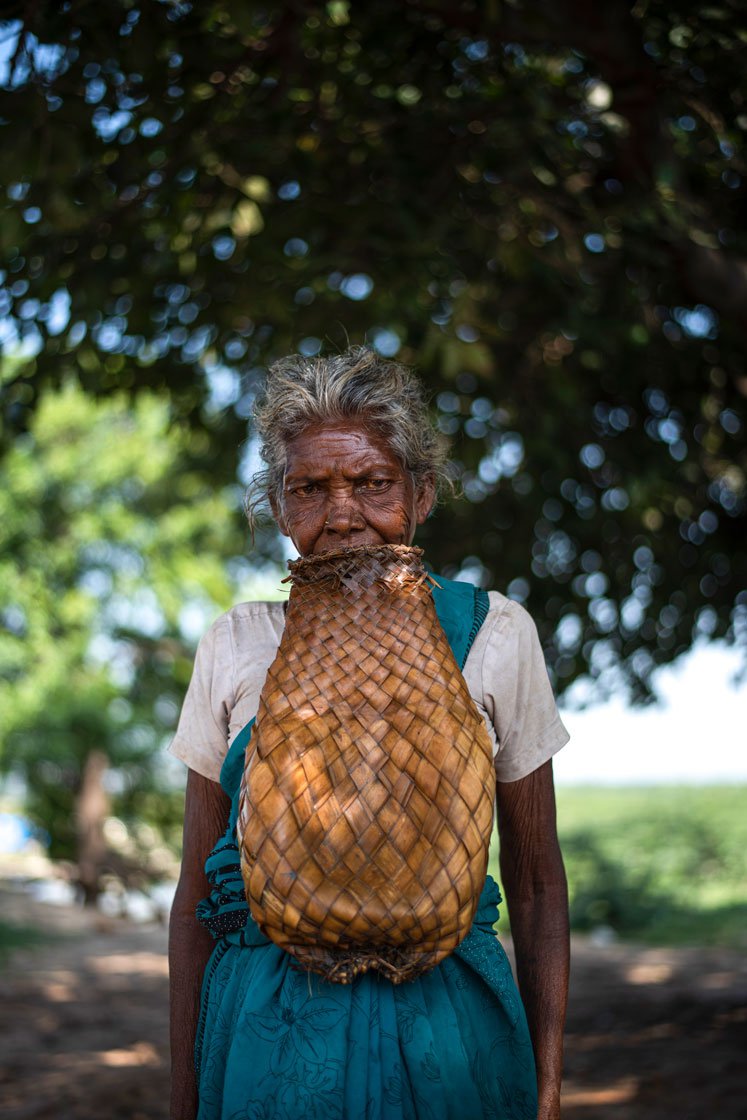
Left: Govindamma is shattered by her son's demise. 'I lost my husband early. Now, my son.' Right: Govindamma in front of her house in Arunodhayam Nagar, with her prawn basket. She continues to work to support her family
This story was reported in Tamil and translated into English by Senthalir S. The reporter would like to thank Rajasangeethan, PARI Translations Editor, Tamil, for his help with editing the Tamil text.
